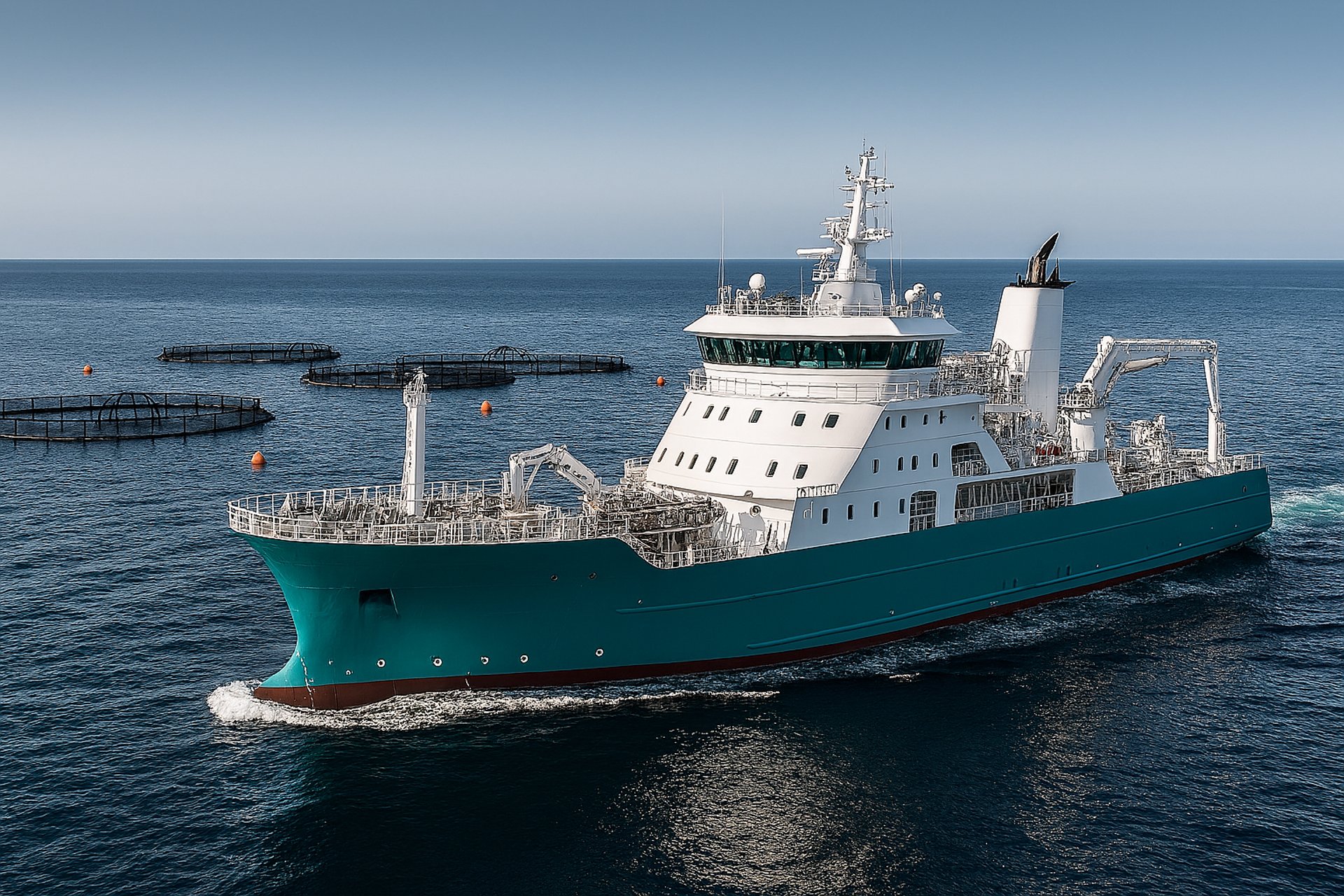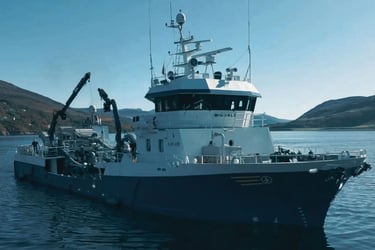
Wellboat Services
Specialised live fish movements using advanced technologies for the aquaculture industry.
Wellboats are specialised vessels designed for the transport and treatment of live fish in aquaculture, playing a crucial role in the marine farming sector. These vessels are equipped with advanced systems to maintain the fish’s environment, including holding tanks with water circulation and oxygenation systems. The primary function of wellboats is to safely transport live fish, reducing stress and mortality rates during transit. They are used for transferring fish from inland hatcheries to offshore fish farms, ensuring the fish remain healthy throughout the journey.
Innovate: Wellboats face several challenges, including maintaining water quality, ensuring fish welfare, and complying with environmental regulations. To address these issues, innovations such as improved waste treatment systems, reduced emissions, and automated tank monitoring systems have been developed, enhancing their sustainability.
Power Profiling: Research and development in wellboat technology continue to focus on improving efficiency and reducing environmental impact. Studies have identified operational phases such as delousing, transit, loading, unloading, and hotel load, which help in understanding the energy consumption and operational profile of these vessels. This information is crucial for evaluating novel fuel concepts and measures to increase energy efficiency, aligning with the sector’s goal of reducing emissions.
Technology: Wellboats are also part of broader efforts to optimize vessel design and logistics in the aquaculture sector. Innovations like the Hydrolicer de-lousing system, which is chemical-free and environmentally sustainable, complement the efficient and reliable operations of wellboats. These advancements aim to support the growing demand for sustainable and efficient aquaculture practices, ensuring the future of wellboats remains promising and aligned with environmental standards.
Salt to Fresh: Reverse osmosis technology is used by some wellboats to convert seawater into fresh water. This involves forcing seawater through a semi-permeable membrane under high pressure, typically around 40-70 bar, to overcome the osmotic pressure. This process separates water molecules from dissolved salts and other impurities, producing fresh water. The seawater is first drawn into the system and then pressurized to pass through the membrane, where contaminants are left behind and the purified water is collected and stored in the well which is where the cargo hold would be in normal vessels. The method of desalination is energy-intensive but highly effective, making it a reliable choice for wellboats to ensure a continuous supply of fresh water for welfare friendly treatments for salmon and other species farmed in marine net pens.



The information on this website is for general informational purposes only. Fishfarmsolutions.com makes no representation or warranty, express or implied. Your use of the site is solely at your own risk. This site contains links to third party content, which we do not warrant, endorse, or assume liability for.


